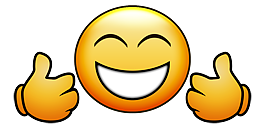Luftrum
Active Member

Dear VI Control friends.
I am proud to announce the release of Bioscape where field recordings merge together in a sonic kaleidoscope of found sound cinematics – from underscoring pads to drones, pulses and textures.
Bioscape is a 4.5GB Kontakt instrument that is based on field recordings and found sounds to create musical content, particularly suitable for game and filmscore composers but works extremely well with ambient music, music concréte, sound healing, music therapy or as a standalone experimental instrument.
Below is a short 2-minute intro teaser on YouTube, there's a link to the full length 30-minute vid at the end of the teaser.
Bioscape contains hundreds of field recordings and found sounds from hydrophonic desert wind to abandoned factory drones, from ghostly ringing rocks to cracking icy rivers, all sorted in different sound categories. Using the sound material, a team of excellent sound designers have crafted over 320 presets sorted in categories from pulses to pads, textures, ASMR, drones, playables and effects.
Bioscape is an official Native Instruments third party library, made for the free Kontakt Player so you do not need the full version of Kontakt to play Bioscape. It is fully NKS compatible and supports drag & drop, so you can use your own sounds and samples. It is installed directly in Native Access, just enter the serial number and click install.
Bioscape supports drag & drop, so you can use your own field recordings and samples

Just drag & drop a sample to the waveform display. You can drag & drop single samples but not multi-samples. If there are loop points in the wave file, it will load the loop too. User samples will automatically be mapped to root note C3 and located in the ‘User’ category.
Within the DNA of Bioscape is a multifaceted instrument that on one side can sound as atonal and dark as you want and on the other side produce the most ethereal and light timbres. It contains presets by sound designers such as Arksun, Simon Stockhausen, Claus Gahrn, Adam Pietruszko, Empty Vessel, Luftrum, Sonic Underworld, Echo Season and Triple Spiral Audio.
One of the key features in Bioscape is the recording automation – a creative tool where you can record motion to shape the character of the sound over time. With this, you can create organic and dynamic movement to the cutoff, volume, pitch, panning and effects, from slow motion to fast and drastic changes.
The recording automation, a creative tool to shape the character of the sound over time...

Bioscape is our biggest, longest running, most complex and mind-bending project in the history of Luftrum. With two years in the making, over 14000 lines of code and 30 people involved in the creation, from world-class field recordists to graphic designers, programmers and a team of excellent sound designers, we are proud to finally set it free from the sound lab.
Check out the playlist below, with demo tracks by a variety of amazing composers, showing the many sides of Bioscape from dark cinematic to light ambient. More info to be found on the Bioscape page.
Luftrum, over and out...
Last edited:


 .
. .
. ).
). . Apart from that I only exchanged some samples but that does not seem to have lots of influence on the cpu. Then it would be good to know a little bit more about whats going on in the background with theses mutate buttons.
. Apart from that I only exchanged some samples but that does not seem to have lots of influence on the cpu. Then it would be good to know a little bit more about whats going on in the background with theses mutate buttons.

